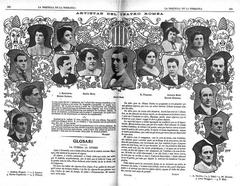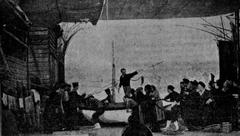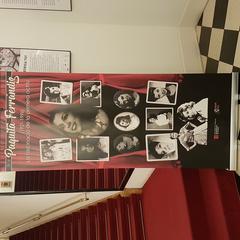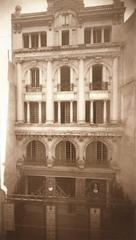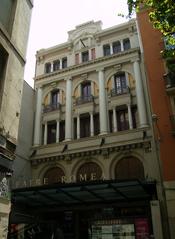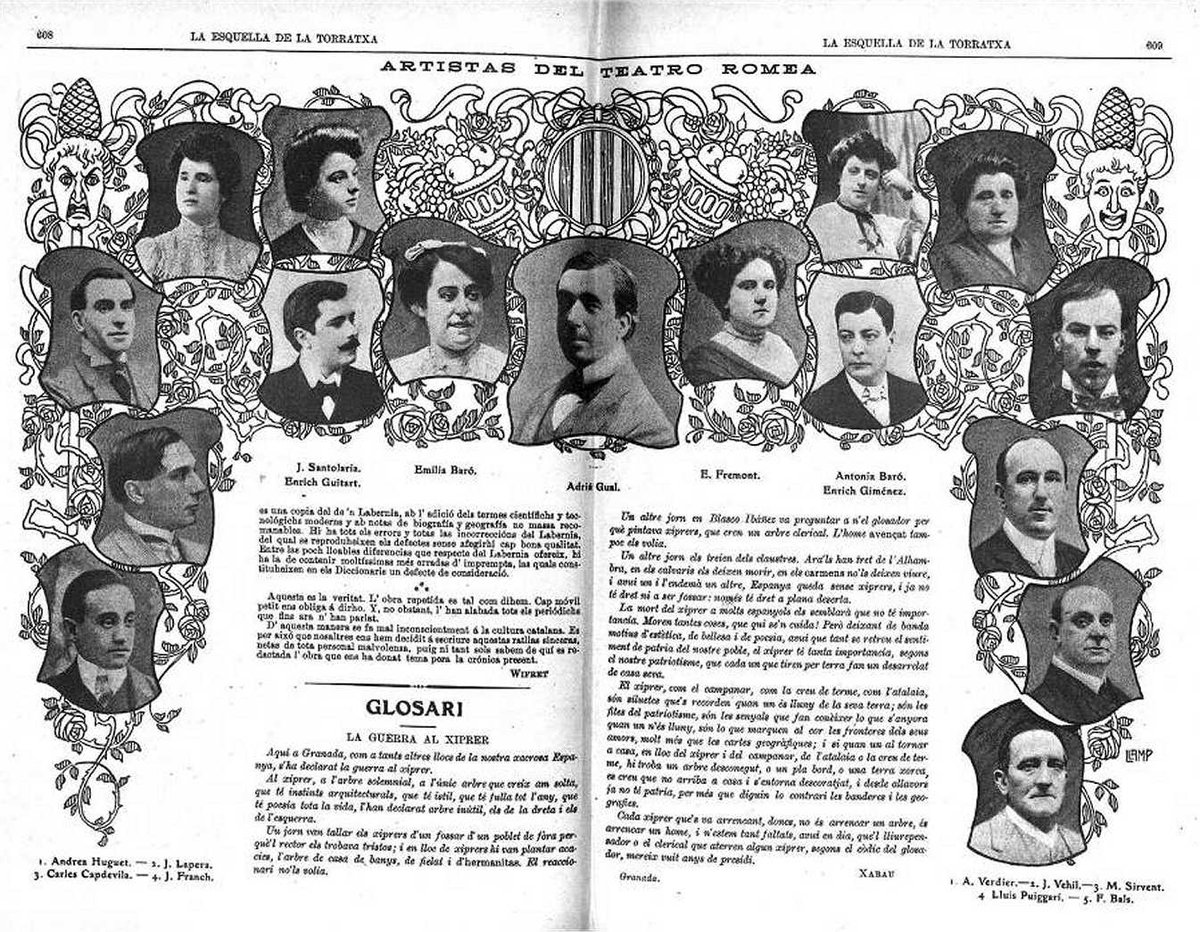
Teatre Romea Barcelona: Visiting Hours, Tickets, and Historical Significance
Date: 03/07/2025
Introduction
Located in the heart of Barcelona’s historic Raval district, Teatre Romea stands as a living symbol of the city’s rich theatrical tradition and Catalan cultural identity. Since its inauguration in 1863, the theatre has cultivated a vibrant artistic legacy, hosting generations of actors, playwrights, and audiences. This guide provides a detailed overview of Teatre Romea’s history, architectural highlights, visiting information, ticketing, accessibility, and nearby attractions—everything you need for planning a memorable visit to one of Barcelona’s most cherished cultural landmarks.
Table of Contents
- Historical Overview
- Visiting Information
- Programs and Events
- Architectural Features
- Visitor Tips
- Frequently Asked Questions (FAQ)
- Conclusion
- Explore More
- Sources
Historical Overview
Origins and Founding Vision
Teatre Romea was founded by Miquel Gasset i Bosch and opened its doors on November 18, 1863, on the site of the former Casino d’Artesans. Intended as an accessible cultural venue for both the petite bourgeoisie and working class, it quickly became a focal point for Barcelona’s intellectual and artistic communities (Figueras; Wikipedia).
Naming and Early Development
Originally known as Teatre Català or Teatre de l’Hospital, the venue was renamed in 1873 to honor the renowned actor Julián Romea Yanguas. It was among the first theatres to champion Catalan-language plays, helping to foster Catalan cultural expression and identity. Notable figures such as Frederic Soler (“Serafí Pitarra”) shaped its early artistic direction (webarcelona.net).
Architectural Evolution and Renovations
Although the original architect remains unknown, Teatre Romea’s horseshoe-shaped auditorium and classic 19th-century design have endured through numerous renovations. Major updates in 1913, 1992, and most recently in 2023 have balanced historical preservation with modern comfort and sustainability. The latest renovations feature ergonomic, recycled velvet seating, improved acoustics, and energy-efficient LED lighting (Figueras Seating Renovation Details).
Cultural Significance
Throughout its history, Teatre Romea has played a vital role in preserving and promoting Catalan language and culture, even during periods of repression such as the Franco regime. Today, it remains a vital hub for theatre in Catalonia, launching the careers of many celebrated actors and playwrights (WebBarcelona).
Visiting Information
Visiting Hours
- Box Office:
- Monday to Friday: 11:00 AM – 2:00 PM & 5:00 PM – 8:00 PM
- Saturdays: 11:00 AM – 2:00 PM
- Performances:
- Evenings typically start at 8:30 PM.
- Matinees on weekends and holidays vary by production.
Hours may change during holidays or special events; always check the official website for updates.
Tickets and Booking
- Purchase tickets online via the official Teatre Romea website or at the box office.
- Prices generally range from €15 to €40, depending on show and seating. Discounts are available for students, seniors, and groups.
- Advance booking is recommended for popular performances and festivals.
Accessibility
- The theatre is fully wheelchair accessible, with removable seating in the stalls.
- Adapted restrooms, ramps, and assistance for visitors with reduced mobility are available.
- Some performances offer live audio description for visually impaired guests.
- For detailed info, visit the accessibility page.
How to Get There
- Address: Carrer de l’Hospital, 51, 08001 Barcelona, Spain
- By Metro: Liceu (L3) or Sant Antoni (L2), both a short walk away.
- By Bus: Several lines, including V13 and D50, serve the area.
- By Taxi: Taxis are widely available across Barcelona.
- Parking: Limited street parking; public garages nearby are recommended.
Nearby Attractions
Enhance your visit with these nearby sites:
- La Rambla: Iconic pedestrian boulevard.
- MACBA: Museum of Contemporary Art.
- Mercat de Sant Antoni: Historic local market.
- La Boqueria Market: Renowned for its vibrant food stalls.
- Gran Teatre del Liceu: Barcelona’s famed opera house.
Programs and Events
- Performances: A diverse program includes classic and contemporary works in Catalan and Spanish.
- Festivals: Hosts cultural festivals such as the Grec Festival.
- Petit Romea: Family and children’s programs.
- Guided Tours: Occasional backstage and architectural tours; check the official website for availability.
Architectural Features
Exterior and Façade
Teatre Romea’s classicist façade, significantly reshaped in 1913 and refined in 1992, is characterized by balanced symmetry, pilasters, and warm reddish tones. The entrance portico leads into a stately vestibule, setting the stage for the grandeur inside (Timeout Barcelona).
Interior Layout
Guests enter a spacious vestibule, followed by the traditional horseshoe-shaped auditorium with a main floor, side boxes, and two balcony levels. This layout fosters intimacy and excellent sightlines for up to 625 spectators (Figueras Seating Renovation Details).
Auditorium and Seating
The most recent renovations feature:
- Ergonomic, recycled red velvet seats.
- Sixty removable seats for flexible configurations.
- Quiet folding and safety return mechanisms for comfort and safety.
- Modern LED floor lighting guiding visitors through the central aisle (Figueras).
Lighting and Decorative Elements
Warm and cool LED lighting highlights the ornate balcony railings, decorative ceiling, and classicist moldings. The material palette—deep reds, golds, and creams—evokes an atmosphere of historical elegance (archdaily.com).
Visitor Tips
- Book Early: Popular shows and festivals sell out quickly.
- Arrive Early: Enjoy the historic foyer and bar-cafeteria, which opens one hour before performances.
- Dress Code: Smart-casual is ideal.
- Language: Most shows are in Catalan or Spanish; check for subtitles or English performances if needed.
- Photography: Not allowed during performances.
Frequently Asked Questions (FAQ)
Q: What are the box office hours?
A: Monday–Friday: 11:00–14:00 & 17:00–20:00, Saturday: 11:00–14:00.
Q: Where can I buy tickets?
A: Online via the official website or at the box office.
Q: Is the theatre accessible?
A: Yes, with wheelchair access, adapted restrooms, and removable seating.
Q: Are there guided tours?
A: Offered occasionally—check the official site for current schedules.
Q: What are the nearby attractions?
A: La Rambla, MACBA, Mercat de Sant Antoni, and more.
Q: Is parking available?
A: Limited; public transit is recommended.
Conclusion
Teatre Romea remains a cornerstone of Barcelona’s cultural and theatrical landscape. Its rich history, carefully preserved architecture, and commitment to community engagement make it a must-visit destination for locals and travelers alike. Whether attending a captivating performance or exploring its storied halls, Teatre Romea promises an immersive experience at the heart of Barcelona’s vibrant arts scene.
For the latest updates on schedules, tickets, and special events, visit the official Teatre Romea website. Download the Audiala app for convenient ticketing and exclusive content, and follow Teatre Romea on social media for news and insider tips.
Explore More
- Guide to Barcelona Historical Sites
- Top Theatres to Visit in Barcelona
- Official Teatre Romea Website
- Figueras Seating Renovation Details
- Timeout Barcelona - Teatre Romea
Sources
- Figueras - Teatre Romea Project
- Figueras PDF - Teatre Romea
- Teatre Romea Wikipedia (Spanish)
- Teatre Romea - WebBarcelona
- Teatre Romea - Catalan Wikipedia
- Figueras Seating Renovation Details
- Timeout Barcelona - Teatre Romea
- Official Teatre Romea Website
